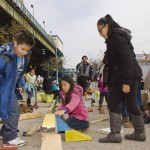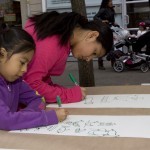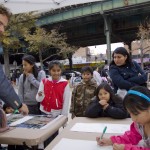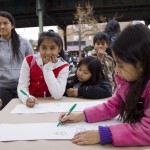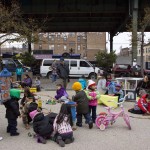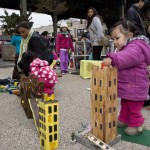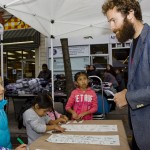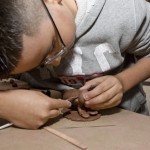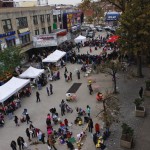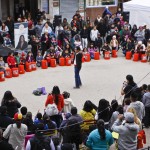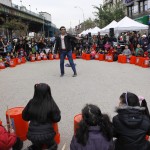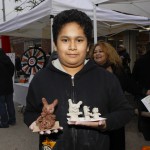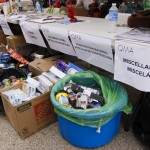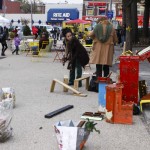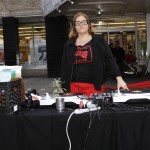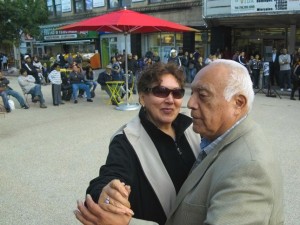Sounds of bolero music filled Corona Plaza on Oct. 22 as members of nearby senior centers danced in the sun. Throughout the afternoon, crowds gathered along the edges of the plaza to watch, some stopping midway up the stairs to the elevated subway platform on Roosevelt Avenue.
˝he event, inspired by the traditional uses of plazas in Latin American cities, was part of a larger effort by the Queens Museum of Art to turn the spot into a center of community activity in Corona. In concert with various neighborhood groups, the museum is organizing an ambitious series of public programs in the recently opened pedestrian area.
Most of these events are geared towards Corona’s immigrant residents. Some are cultural, such as dance and music performances, while others will focus on civic and political issues affecting the community, museum organizers say.
The museum is planning a festival with music, dance and art workshops for Saturday, Nov. 10, during which it will also collect donations to help the Rockaways recover from Hurricane Sandy.
Corona Plaza used to be split by a service road connecting National and 104th streets just south of Roosevelt Avenue. The roadway was plagued by trash, parked trucks and traffic. But in late August, the city Department of Transportation closed it to cars, paved it with gravel and brought in chairs and tables. Meanwhile, Councilwoman Julissa Ferreras (D-Corona) allocated $17,000 to the Queens Museum for public programming.
At the Oct. 22 event, some 50 seniors attended the afternoon of bolero dancing, which was followed by a potluck meal and evening screenings of short films narrating immigrant experiences.
“I’ve been in Corona since ‘62, and this is the first time I’ve seen something nice and decent happen here,” Cristobalina CÈspedes, one of the seniors, said in Spanish, while sitting at a table to take a break from dancing.
Pointing to a mauve sweater she wore under a black velvet blazer, CÈspedes said this was the first day she was wearing color out of the house since her son died in a car accident a year ago.
The scene reminded Alberto and Esther Olivera, a couple who married 46 years ago, of the plazas in their native Lima, Peru, where people gathered to play guitars and dance.
“It’s a moment of relaxation for working people,” Alberto Olivera, 73, said in Spanish.
The museum has been reaching out to multiple community groups throughout Corona and neighboring areas about planning their own events and activities, according to Jose Serrano-McClain, the museum’s full-time community organizer. These include New Immigrant Community Empowerment, the Corona Youth Music Project and Drogadictos An—nimos, an Elmhurst-based drug recovery center.
In addition to encouraging these groups to use the plaza, the museum is offering to help them navigate the city’s permitting process, which can be burdensome and costly, said Prerana Reddy, director of public events for the museum.
Serrano-McClain hopes the plaza will be a salve for some of Corona’s problems. For instance, in a neighborhood composed mostly of immigrants, many of whom are undocumented, integration into community life can be difficult.
“You’re just not sure what the trust networks are yet, especially if you’re recently arrived,” said Serrano-McClain. Public events can help create “the kinds of environments that signal that you’re a little bit closer to home than you think.”
The museum’s programming has been well-received by residents. Martha Gualotuna, an immigrant from Ecuador who lives in Corona, agreed that the museum could help the community at large. She said she wants to see more events for the neighborhood’s children, since many of their parents work long hours and have little time to spend with them. Perhaps a youth talent show, she suggested.
“I have a 15-year-old daughter, and she has a beautiful voice,” Gualotuna said.
For now, the museum is testing out the space and trying to make residents comfortable with using it for more than the occasional sit-down.

